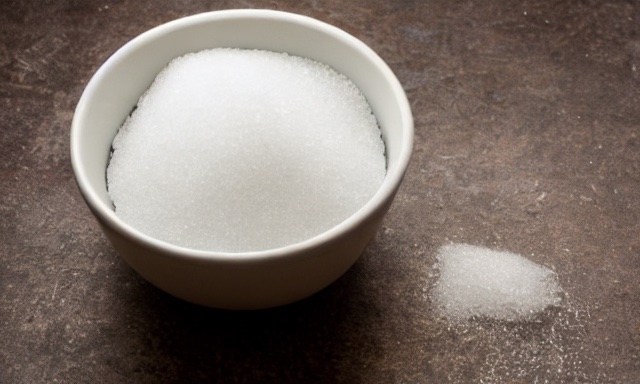Internet Asks:“ Is Sugar a Spice?”
In the vast and curious world of the internet, questions can lead us down unexpected paths. One intriguing query that has left many culinary enthusiasts scratching their heads is, "Is sugar a spice?" Let's embark on a flavorful adventure as we navigate through the realms of the kitchen to uncover the truth behind this peculiar internet inquiry.
sponsored links

Spices: The Essence of Flavor
Before we unveil the answer, let's first explore the wondrous world of spices. Spices are aromatic substances derived from various parts of plants, such as seeds, roots, bark, or fruits. Throughout history, spices have played a captivating role in enriching cuisines, adding depth, and elevating dishes to new heights of flavor.
Spices come in an enchanting array of tastes, ranging from the
warm and earthy notes of cinnamon to the fiery allure of chili peppers and the citrusy
tang of cardamom. These culinary treasures are celebrated for their ability to transform
the ordinary into the extraordinary, making them an essential part of kitchens around
the world.
Here are some examples of common spices:
- Black Pepper: A staple in almost every kitchen, black pepper adds a sharp and pungent taste to dishes. It's widely used in savory recipes and can be freshly ground for maximum flavor.
- Paprika: This vibrant red spice adds a mild and slightly sweet flavor to dishes. It comes in different varieties, including sweet, smoked, and hot, each with its unique taste.
- Ginger: With its zesty and slightly spicy taste, ginger is a versatile spice used in both sweet and savory cooking. It's commonly found in Asian and Indian cuisine.
- Nutmeg: Often used in baking and desserts, nutmeg has a warm and slightly sweet flavor. It pairs well with dishes like pumpkin pie and creamy sauces.
- Turmeric: Known for its bright yellow color, turmeric has a warm and earthy flavor with a slightly bitter undertone. It's a key ingredient in curry powders and gives many Indian dishes their distinct color.
- Cumin: Cumin has a warm and nutty flavor, commonly used in Mexican, Indian, and Middle Eastern cuisine. It's often found in spice blends like chili powder and curry powder.
- Coriander: The seeds of the coriander plant have a citrusy and slightly sweet taste. Ground coriander is used in various dishes, while fresh coriander leaves (cilantro) are used as an herb.
The Sugar Saga: Sweetness Unveiled
Now, let's address the burning question: Is sugar a spice? The answer may surprise you! No, sugar is not classified as a spice. Unlike spices, sugar is derived from sugarcane or sugar beets and is considered a sweetener rather than a flavor enhancer.
Sugar plays a distinct and vital role in the culinary landscape, bringing sweetness to a wide array of dishes and beverages. From luscious desserts and decadent pastries to perfectly balanced sauces and marinades, sugar's presence is felt far and wide in the world of gastronomy.
sponsored links
Spice or Sweetener: The Culinary Distinction
To fully grasp the difference between spices and sweeteners like sugar, let's highlight their contrasting characteristics:
- Flavor Profile: Spices offer a diverse range of flavors, such as sweet, savory, spicy, and earthy, enriching the taste of dishes. On the other hand, sugar solely provides sweetness and is used to balance or complement other flavors.
- Plant Origins: Spices are derived from various parts of plants, including seeds, bark, and roots. Sugar, on the other hand, is extracted from sugarcane or sugar beets, making it a product of specific plants.
- Culinary Usage: Spices are typically used in smaller quantities to enhance the overall taste of a dish, while sugar is used more liberally to impart sweetness and enhance the overall palatability.
Embrace the Culinary Symphony
In the delightful orchestra of flavors that graces our culinary creations, spices and sweeteners like sugar play distinct roles. As we savor the richness of spices and indulge in the sweetness of sugar, let's celebrate the diversity and harmony that both bring to our plates.
So, the next time you stumble upon an intriguing internet query, remember that the journey to discover the culinary truth can lead you to fascinating places. Spice up your cooking with an array of aromatic spices and embrace the sweetness of sugar as you explore the boundless possibilities of the culinary world.
Disclaimer: The information provided in this article is for educational and entertainment purposes only and should not be construed as professional advice. Always consult with a qualified culinary expert or registered dietitian for personalized guidance regarding specific dietary needs or culinary inquiries.
sponsored links
References
- US Forest Service. Spices and Herbs. https://www.fs.usda.gov/wildflowers/ethnobotany/food/spices.shtml
- McCormick Science Institute. HISTORY OF SPICES. https://www.mccormickscienceinstitute.com/resources/history-of-spices
- Unlock Food. How to Cook with Spices. https://www.unlockfood.ca/en/Articles/Cooking-food-preparation/How-to-cook-with-spices.aspx
- Johns Hopkins Medicine. 5 Spices with Healthy Benefits. https://www.hopkinsmedicine.org/health/wellness-and-prevention/5-spices-with-healthy-benefits
People are also reading...
Does Sprite Have Caffeine?
Calories In Steak?
Chicken Taco Calories?
Does Hot Chocolate Have Caffeine?
Are Carrots Acidic?
Are Mangoes Acidic?
Orange Juice pH?
Does Kahlua Have Caffeine?
Calories In a Grilled Cheese?
Is Watermelon Acidic?
6 oz Steak Calories?
Are Strawberries Acidic?
Ready to level-up?
Create meal plans 10x faster, follow up with your clients through our mobile app, and never struggle with meal planning or recipe management again.